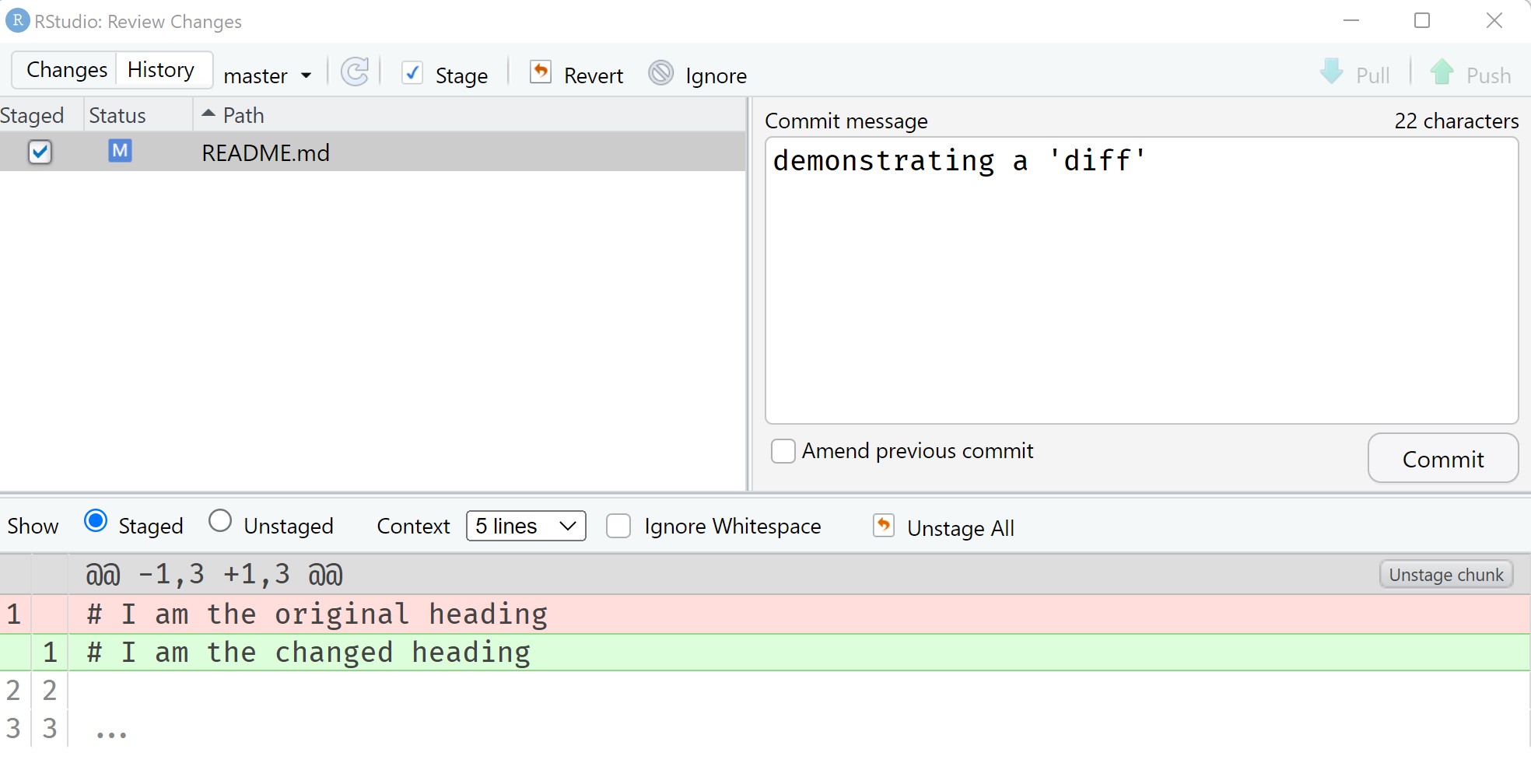flowchart LR A[Matt v1] --> B[Ya v2] B --> C[Matt v3] B --> D[Ya v1] D --> E[Ya+Matt v4] C --> E
5 Version Control & Collaboration
Good Software Engineering Practice for R Packages
Matt Secrest
July 20, 2023
- Overview, demo, practical
- Can only scratch surface
- More resources on website
Photo by Rich @ rhubbardstockfootage on Unsplash
Trade-offs in code development
Working alone
- no coordination overhead
- no review
- can slack on documentation
- fragile long-term maintenance
Working in a team
- coordination overhead
- mutual review of code
- forced to document
- more robust long-term maintenance
Version control systems (VCS)
- Manage different versions of a piece of work
- Compare and merge diverged versions effectively1
- Code is complex system \(\leadsto\) ideal application of VCS
- Compounded by multiple people ‘fiddling’ with it!
git basics
Enter git the ‘Latin of data science’

- Author Linus Torvalds, for work on Linux kernel
- Essentially a database with snapshots of a monitored ‘repository’ (directory)
- Optimized to compute line-based changes
- Integrated in RStudio IDE, Visual Studio Code
- De facto standard not just in the R world
- Alternatives: mercurial, SVN, …
Photo by Lf Asia & the Archive Team CC BY 3.0
Stage & commit

gitGraph commit commit commit commit commit
- ‘Stage’ changes for inspection
- allows to inspect propose changes before locking them in
- Permanently ‘commit’ changes to git
\(\leadsto\) Chain of versions with incremental changes
Photo by Felicia Montenegro on Unsplash
Line-based differences - the ‘diff’

- Changes in git are line-based
- Additions (green) & deletions (red) between commits
Going back in time

- Every commit has unique hash value
- Can ‘checkout’ old commit (browse history)
git checkout [commit hash to browse]- Can ‘reset’ changes
git reset --hard [commit hash to reset to]- Removes need for
my-file_final_v2_2019.R - Time travelling has its dangers…1
Photo by Mila Tovar on Unsplash
Branching

gitGraph commit commit branch feature checkout feature commit commit checkout main commit
- Variations of repository: ‘branches’
git checkout -b [my new branch]- Quick switching between branches
git checkout [branch name]Photo by Mila Tovar on Unsplash
‘Merging’ two branches

gitGraph commit commit branch feature checkout feature commit commit checkout main commit merge feature
- Consolidate diverged ‘branches’
- Usually merged automergically
- Conflicting changes
- Line edited in source/target branch - keep which?
- Resolving merge conflicts beyond today’s scope
Photo by Max LaRochelle on Unsplash
Example of ‘gitflow’
gitGraph commit tag: "v0.0.1" commit branch feature-1 checkout feature-1 commit commit checkout main branch feature-2 checkout feature-2 commit checkout feature-1 commit checkout main commit tag: "bugfix" merge feature-1 tag: "v0.1.0" checkout feature-2 commit
- ‘gitflow’: specific workflow for git repositories
- features developed on branches, then merged into ‘main’
Version Control & Collaboration
- git itself is command line tool for version control
- git platforms add UI for collaboration1
- GitHub.com de facto standard in R (alternative: GitLab.com, BitBucket.org, Gitee.com)
- git + GitHub
- VCS (git)
- Web hosting of code (GitHub)
- Organisation with issues, discussions (GitHub)
- Automation of checks/test (GitHub)
git platforms
GitHub.com
- Huge number of R packages developed there:
- 100 million developers on GitHub.com (Jan ’23)
- 372 million repositories, 28 million public (Jan ’23)
- ‘Facebook’ of developers / social coding
- Discuss problems / propose changes
Branches & pull requests
- Branches are a git concept
- Git platforms add concept of ‘pull request’ (PR)1
- PR is ‘suggested merge’ from branch A to B
- Usually from ‘feature A’ to ‘main’
- Allow to preview problems before merge and discuss changes
- Once everyone is happy, a pull request2 can be merged
- Every PR has an associated branch, but not every branch has a PR
- More in the demo!
Automating things with GitHub
- GitHub provides
- cloud compute
- scripting framework (GitHub actions)
- Allows task automation, e.g.
- run unittests
- build & host documentation
- static code analysis (linting)
- Most important actions for R: github.com/r-lib/actions
- Extremely useful to enforce best-practices & quality
A typical GitHub workflow
sequenceDiagram
participant M as Matt
participant GH as GitHub server
participant Y as Ya
M->>M: make change locally & commit to <feature>
M->>GH: push commit
M->>GH: open pull request
GH->>GH: run automated checks
M->>Y: request review
Y->>Y: review code
Y->>M: request changes
M->>M: implement changes locally & commit
M->>GH: push commit
GH->>GH: run automated checks
M->>Y: request review
Y->>Y: review code
Y->>GH: approve changes, unblocking merge
M->>GH: merge <feature> into <main>
GH->>GH: run automated checks on <main>
Y->>GH: pull newest version of <main>
Looks awefully complicated, why?
- Efficient collaboration with novice/untrusted contributors
- Maintainer: automated checks reduce review burden
- Contributor: no need to check manually
- Branching promotes asynchronous work on features
- Full history - can always go back
\(\leadsto\) making code-collaboration scalable
Demo
- How does a pull request work?
- First steps for setting up the next practical
- Don’t panic - steps are all documented at
https://github.com/kkmann/simulatr
Practical - collaboration on GitHub
- Work in teams of ~ 3 or 4
- Go to https://github.com/kkmann/simulatr and read through the instructions in the README.md file
- The repository is a template to practice collaboration on GitHub
- Only one member per team needs to use the template and invite the others as collaborators!
- Take some time to checkout the
README.mdfile and set up your environment in posit cloud - Can you fix the errors with some pull requests?
- The purpose of this exercise is to explore the collaboration functionality of GitHub - not to produce a perfect package ;)
License information
- Creators (initial authors): Kevin Kunzmann , Shuang Li
- This work is licensed under the Creative Commons Attribution-ShareAlike 4.0 International License.
- The source files are hosted at github.com/openpharma/workshop-r-swe-sf, which is forked from the original version at github.com/openpharma/workshop-r-swe.
- Important: To use this work you must provide the name of the creators (initial authors), a link to the material, a link to the license, and indicate if changes were made